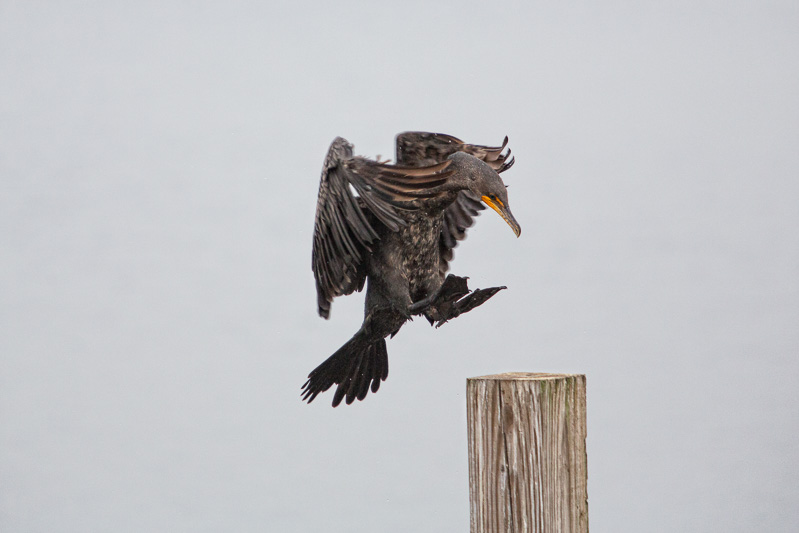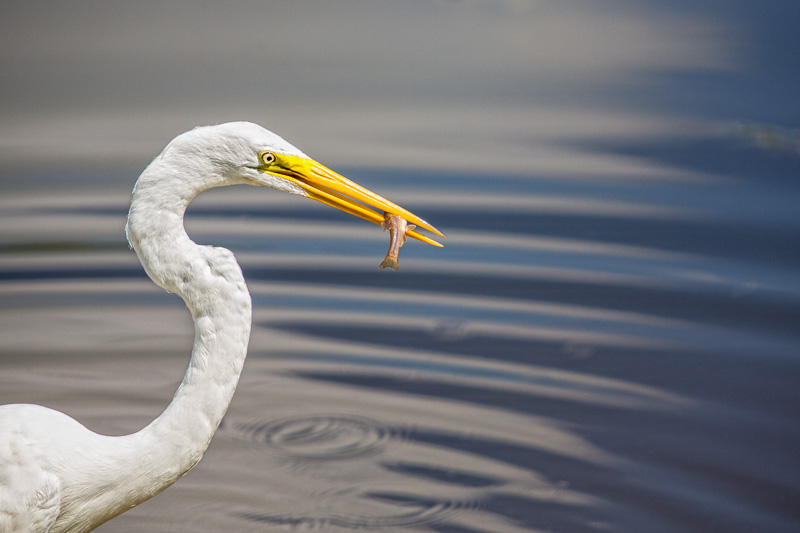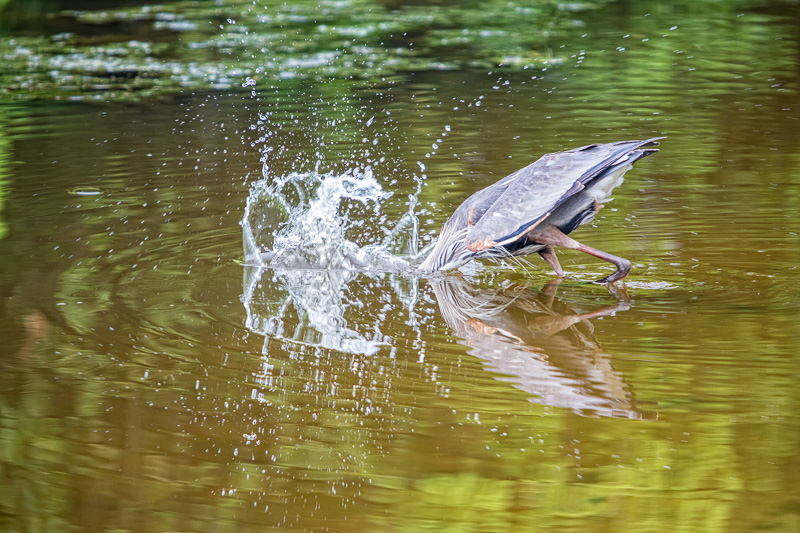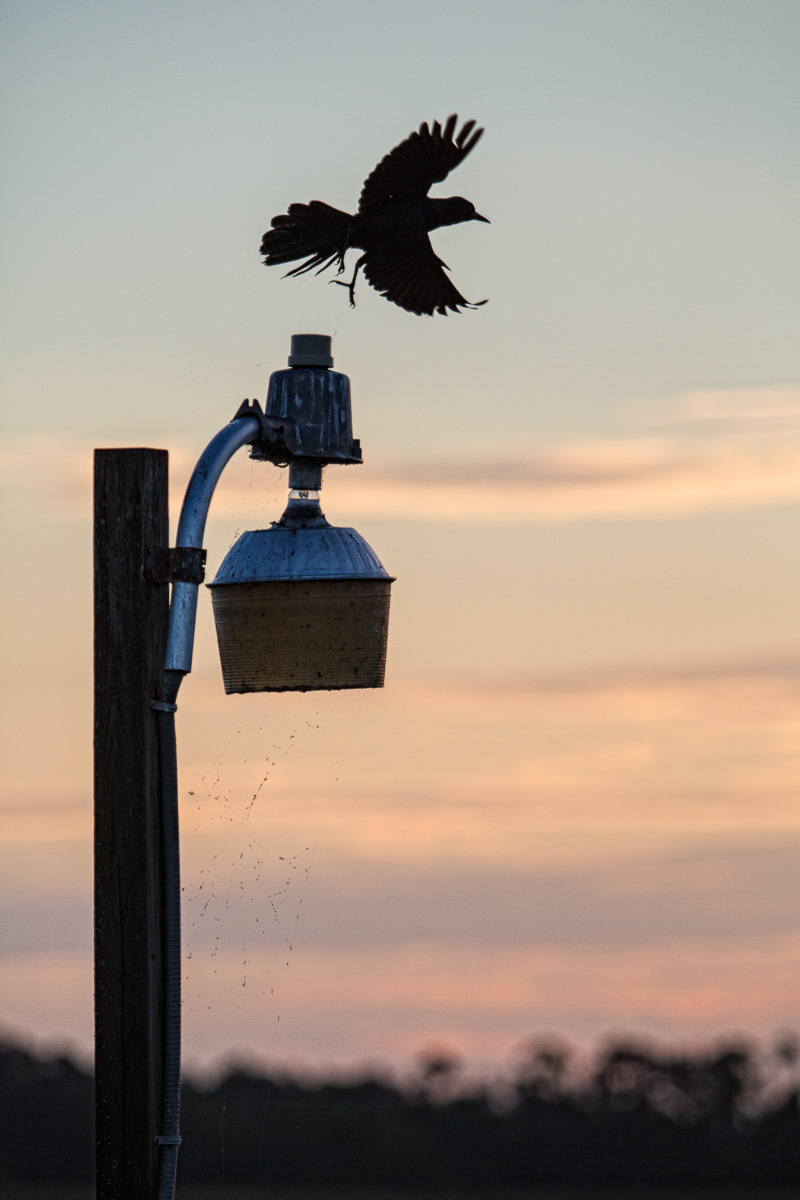I forgot to post some images from my recent trip to Florida. I don’t regard myself as a nature or wildlife photographer. For one thing, I don’t have the proper equipment for it, namely a fast long lens. Maybe one day when I have an extra couple of mil to drop, I’ll pick up that 1600 mm lens I’ve been hankering for. In the meantime, I make do with my 70-200 mm lens with 2X extender. For another thing, I live in downtown Toronto and so most of my photo opportunities (and my love) belong to urban spaces. Nevertheless, one kind of photography doesn’t preclude the other. And skills applied in one are transferable to the other.

For example, in the cases of both wildlife and street photography, the aim is to capture a dramatic moment, something in process, a narrative. It isn’t good enough to shoot a bird on a branch and offer it as an instance of a pretty bird on a branch. The pretty bird on the branch has to be doing something. In the same way, it isn’t good enough to shoot a static picture of a person staring at the lens like the subject of a 19th century portrait. The person has to be engaged (and engage us) in something more.

In both kinds of photography, capturing that dramatic moment means that you have to be on edge. At any second, the drama may present itself and you have to be ready for it. The heron may lunge. The man may shake his fist.

As a corollary, both kinds of photography produce a lot of garbage. Wildlife and people (especially children) move around a lot. They’re unpredictable. You may shoot a series in continuous mode, a rapid burst that gives you nothing, one decent shot if you’re lucky. You have to reconcile yourself to the fact that your one success will be ushered in on a thousand failures.

There are differences, of course. In street photography, there are conventions that, for practical reasons, haven’t caught hold with wildlife. One is the tendency to work exclusively in black and white. In wildlife photography, colour is often the point and converting to black and white would only undermine the work. Also, street purists frown on those who use anything longer than a 50 mm lens; you have to get in close and personal. In wildlife photography, that simply isn’t possible, especially if you’re shooting alligators or rattle snakes. Well, it’s possible, if you don’t mind putting an abrupt end to your career.

I really enjoy reading your thoughts on street vs wildlife photography. You are completely right, a bird sitting on a branch says very little. It doesn’t evoke any emotion or tell a story. When I first started taking photographs, I was thrilled that I could even catch a picture of a bird before it flew away.
Your page serves as a reminder to look deeper. Thanks again.
Thanks Diane. I in no way want to denigrate the act of simply capturing a bird sitting there. Certainly, from a birder’s point of view, it’s important simply to document where and when you see any given species. But from a photographer’s point of view, documentation is one stop on a longer journey. Okay, so you’ve captured the bird sitting on the branch. Now what? If you sit there long enough, eventually the bird will answer that question for you.